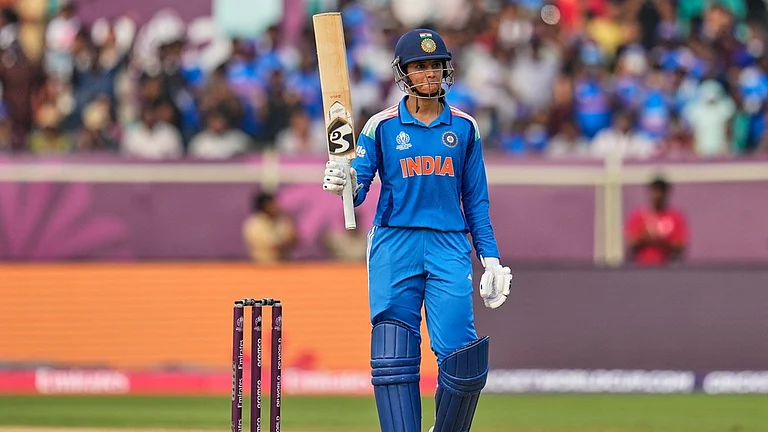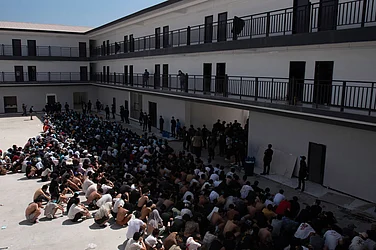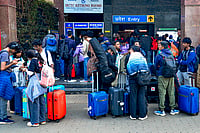“If there is God, then devils and witches are also true. (You) stop trusting in God, I will quit believing in witches.”
— An Oraon tribal of Ranchi, Jharkhand
At some point in time, witch hunting- and witchcraft-related violence had been customarily prevalent in almost all societies of the world. Currently, it is still prevalent in India. Dissection of reported cases on parameters of community affiliation and gender brings out the fact that it is largely rampant among tribals (adivasi) — that too residing in rural precincts where the victims are mostly adivasi women.
More than ever, there is need to draw attention to and address problems that are often ignored by mainstream media and law enforcement agencies. It deserves consideration for the way exclusionary practices are ingrained to stigmatise individuals and subject women to inhumane punishments.
The tribal worldview of witchcraft
Witchcraft is ubiquitous and entwined in everyday lives of tribals. It is so deep-seated that faith in witches, their craft, and bewitchment is not at all a matter of wonderment. Considered as a complex matrix of beliefs that transcends natural laws and scientific rationality, it is the practice of invoking diabolical occult powers for causing malevolent influences.
Tribals have unmoving faith that lethal interventions and disturbances caused to these powers, through witchcraft, deviate them from their natural course, leading to manifestations in the form of uninvited course of events. Such convictions, bestow the moral standing for conducting corrective and preventive measures like performing religious rituals, pleasing supernatural powers, offering sacrifices, conducting ordeals, and even killing alleged individuals accountable for unsolicited happenings.
The blame for almost everything unfortunate happening in community is labelled upon individuals who are believed to practice witchcraft. Usually, believed to be invoked by females colloquially known as dayan, it is conspicuously believed that they control negative supernatural supremacies by their craft to seek assistance in deleterious doings. It is widely relied that they can cause an array of undesirable events such as pregnancy termination, sterility in males/females, death of pregnant mother, ineffectiveness of medicines, memory loss, and burning sensation in body parts. Apart from these, grappling through invisible forces, cursing through spells, rendering financial loss, poisoning of body, metamorphosing, strife among family members/neighbours, vituperation, loss or theft, inability to attract lover etc., are also believed to be endeavoured by witches.
Usually, spells and evil-eye are the most common modes of operation, however other methods like inscription, immolation, piercing of needles on mud images, divination etc., are also believed to be employed for malevolent usages.
Tribals ardently believe that necromancy, spell casting, conjuring, hypnosis, incantation, evil eye, shooting invisible arrows, poisoning, and metamorphosing are the major sub-crafts which are mastered during the process of witchcraft erudition. In the course of erudition, trainee witches learn how to kill and bring back an individual to life. During initial stages, it is practiced on trees. If the learner is successful in making it dry, it is considered that the learning is entering into its advanced stages. Thereafter, if s/he is able to bring it back to its original healthy state, it is perceived that the craft is ready to be worked upon humans.
Tribals ardently have faith that upsetting of balance between the natural world and supernatural world leads to undesired events. Due to this, in instances of unsolicited events which are not considered to be natural, things take radical turn and accusations are levelled upon witches. Usually, it all begins with some pre-existing animosity between neighbours or closely residing relatives. From here the process of social construction of witch is triggered. In most cases, neighbours, relatives, and acquainted people are the ones who spread this word. This defamatory narrative-building plays significant role in congregating support against the perceived witch, thereby creating an atmosphere of anxiety where people actually start believing that the cause of unfortunate events is vested in supernatural powers controlled by witches.
The veracity of the rumoured individual being a witch is confirmed by local sorcerer or sorceress —known differently in different regions such as bhagat, ojha, sokha, guni etc.— by adopting certain established methods of identification. If affirmed, a state of anxiousness is generated which then translates into collective anger directed against the identified women. In such situations, the position of witch is similar to that of a community criminal. If the extent of damage is less, the alleged witch is forced to consume urine or excreta and is forcefully wandered around the village with garland of shoes and damaged winnowing baskets to make residents aware about the witch. These humiliations act as warning both for the alleged witch and lookers for desisting from such practices. However, if the magnitude of loss is more, then in such instances, it leads to killing of alleged witch.
In this sequence of events, there are certain customary acts which are conspicuously executed. In most instances, killings are performed during night hours when the alleged witch is jolted from sleep. It is faithed that killing during untimely hours would restrict her from invoking supernatural powers which otherwise would protect her and make the killing insurmountable. Also, since the witch is armed with supernatural powers, the entire community lends support in eliminating the evil. Regarding plurality of gender participation, women are equally participating and ruthless. The name of fellow tribals uttered by witch during the course of thrashing and hitting are also considered as partners in crime and subjected to similar terminal treatment.
It is faithed that killing the woman alone does not completely omit the influence of her deleterious powers. It is presumed that she hands over them to other members of her family. Hence, during instances of hunting, family members of alleged witches are also murdered for preventing the spread of residual influence of menace. After hunting, people rejoice that they have killed the culpable individuals and now anything bad shall not happen in the community. This public action of mob lynching is considered to be an act of social cleansing carried out for public welfare and so there is no remorse about killing their own community members. This rationality delivers the morality for accepting witch-hunting as a justified act within the entire community.
Apart from lynching, there are other social ex-communications and exclusions, which are often faced by alleged witches. Fellow tribals do not call them in occasions like birth, marriage, or socio-religious events out of fears of their negative influence on the auspicious occasion. They are reluctant in socialising with them and very often abstain from consuming food prepared at their home. People also desist their children to socialise with them or their children.
After being labelled, alleged witches are ousted from the community and are forced to build their home outside the village vicinity. The associated stigma is so prominent that anyone who defends the witch or dares to stand up for her is also considered an enemy of the community and has to face the community’s annoyance. In short, there is no sympathy for witches in the tribal worldview.
Causative agents for witchcraft-related violence
Rationally speaking, non-cordial relationship, accompanied with malice, vindictiveness, revenge, greed, animosity and jealousy are the prime reasons which invite witchcraft allegations. Everybody suffers from misfortunes and the only option available is to blame someone whom they know are not their well-wishers. Thus, witchcraft accusation becomes an easy way of imposing the burden of anxieties and attributing it to local actors become an easy way out for scapegoating.
Also, analysis of socio-economic conditions of tribal dominated regions reveal that faith in witches and witchcraft practices is existent largely due to poverty, lack of basic healthcare facilities, ignorance, non-rationality, socio-religious practices lacking scientific foundation, and animosity with neighbours.
Apart from these, low quantum of punishment in anti-witch hunting laws, piecemeal nature of laws, hostility of eyewitnesses during trials, and absence of national legislation, are the other deterring legal impediments. Also, widespread ignorance that the customary action of tribals attempting to weed out the alleged witch is a punishable offence —that too cognizable and non-bailable— is also a major contributory actor. Alongside these, under-reporting of witchcraft related cases, wherein victims manage to survive after facing gross desecration of human rights is completely ignored by government agencies. This leads to failure in drawing of attention of law enforcing agencies and society at large. Even if covered by media, its miniscule coverage at the national level fails to attract mass consideration.
Another contributing factor in this is the manner in which it is approached by law enforcement agencies. Despite intelligence inputs, local police often reckon it as matter of internal strife of minuscule magnitude, unworthy of sparing time and effort, and therefore desist from initiating any reparative measures for tackling it beforehand.
Furthermore, lack of critical thinking, culturally disconnected awareness schemes, dearth of political will, unavailability of grassroot strategy for providing compensation, financial assistance, legal aid, protective shelters, medical assistance, clubbed with lack of accountability-fixation of village witch-doctors and -sorcerers, poor funding for civil society organisations, lack of database of witch-doctors and alleged witches, non-existence of mechanism for anonymous reporting of witchcraft cases; and surge in television shows portraying contents relating to magic and superstitions are some of the other major reasons for sustained existence of witchcraft and witch-hunting.
The way ahead
Given the high levels of materialistic and economic deprivation in witchcraft-infested regions, it would be inappropriate to write off the entire culpability upon debilitated tribals for their lack of rationality, belief in superstition, and gendered practice of witch-hunting, as they do not opt for deprivation — rather suffer the consequences of it. It signals toward the negligence and apathy towards the community and thus there is need to ponder upon the underlying causes that need amelioration.
This calls for addressing the underpinning causes and conditions by adopting a holistic approach which guarantees prevention, prosecution, redressal, and reparation. For ensuring this, role of education, law and public policy, are very pertinent. Thus, reparative interventions ensuring accountable administration, accessibility to healthcare facilities, responsive law enforcement, and efficient judicial system, are pivotal in ensuring material transformation.
However, for levelling socio-economic inequalities and transcending long-held convictions relating to witchcraft, change must emanate from within the community. For this, education alone can help in desisting superstitious institutional practices, averting blindfold conformity, promoting community dialogue, engaging in remedial practices, improving livelihood support, and fostering economic empowerment.
Cumulatively, all these things can heal and rebuild the lives and families broken by such gratuitous victimisation and also contend faith in existence of witches, their perceived craft and witch-hunting.
(Dr. Shamsher Alam and Dr. Meena Kumari are associated with the Department of Anthropology and Tribal Studies at the Central University of Jharkhand. Views expressed are personal to the authors.)





















